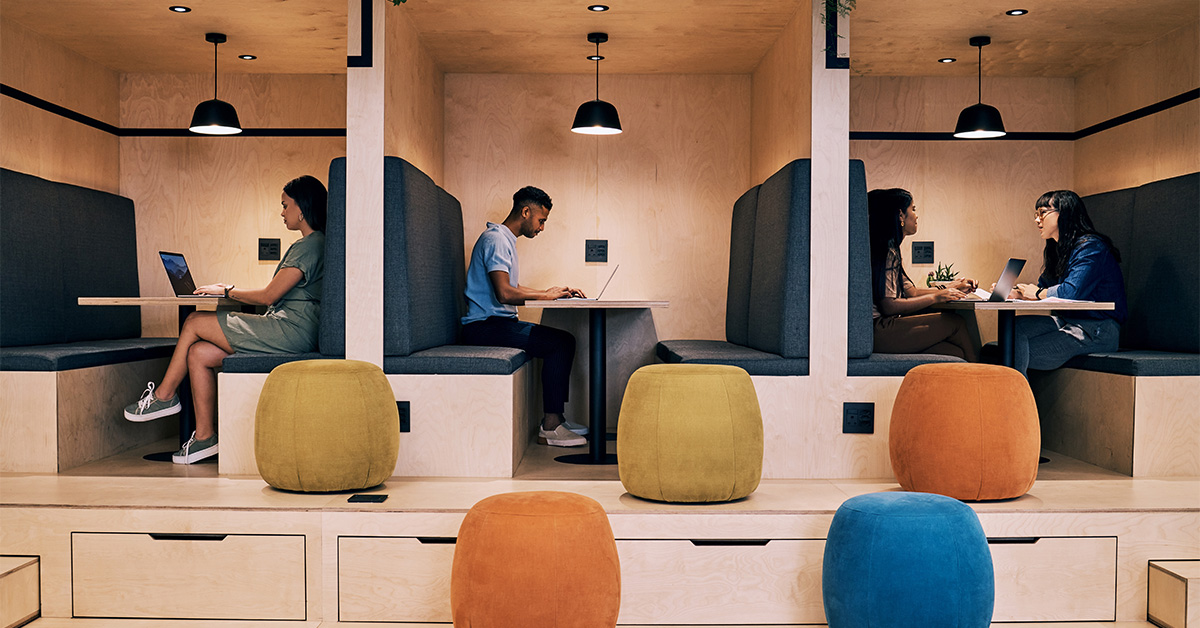Office Assets
As companies of all sizes begin to implement their return-to-work plans, conversations around the future of the office continue to evolve. As a team of CBRE office specialists in the brokerage community, we work firsthand with landlords and tenants throughout Nevada, as well as with buyers and sellers of owner/user and investment office assets. We are seeing—and practicing—a shift from what was originally considered “traditional office space” consisting of a reception area, conference rooms, and perimeter offices with cubicle or bullpen space, to a more open, collaborative, and interactive workspace that offers employees the flexibility to choose where they work in the office based on their individual needs.
Fittingly, CBRE’s Las Vegas team recently moved into its new office at UnCommons, a 40-acre mixed-use development constructed with WELL certification standards for health and wellness. Located in the booming Southwest submarket, the fastest growing submarket in the Las Vegas Valley, the 19,000-square-foot workplace occupies an entire floor of one of UnCommons’ office buildings.
While the concept of open, collaborative workspaces may be new to many, and seen as a response to shifting demands from employees to work remotely more often, the design of CBRE’s new Las Vegas office was informed by a decade of workplace strategy for the company’s corporate offices, dubbed Workplace360. The space showcases CBRE’s “Future of Work” space standards, including innovative technology and a wider variety of collaborative spaces designed to support hybrid working. CBRE launched its Workplace360 program in 2012 and has since opened more than 100 Workplace360 offices across the globe.
As observed in CBRE’s Spring 2022 U.S. Occupier Survey, 73% of companies queried anticipate allowing their employees flexibility to work remotely for a portion of their workweek. Nineteen percent say they’ll be entirely office-based, and only 8% say they’ll be virtual-first or fully remote. A cornerstone of the Workplace360 model is its “free address” approach focused on unassigned seating with technology-driven breakout rooms that support collaboration with clients or employees that may not be in the office. As many companies move to hybrid work models, a free address approach enhances space utilization as any workstation can be used by employees who are in the office on a given day, rather than sitting empty when its permanent user is working remotely for the day.
Impact on Office Investments
Today’s office investor is cognizant of these latest occupier trends, which is witnessed in the search for high quality assets that already offer flexible workspaces. Moving forward, as pervasive inflated construction costs continue, this is likely to remain a critical factor as investors will prefer to avoid high tenant improvement costs during future re-tenanting efforts.
In speaking with Bob Ybarra, executive vice president of CBRE Capital Markets Southwest Region, from a lending perspective, there has been increased scrutiny into the asset class, and more specifically an asset’s location and amenities, leading to a weariness of CBDs, and a desire to focus on core, well-located, suburban office locations.
In addition to increased scrutiny of the asset, lenders are also being more conservative on loan-to-value ratios, therefore requiring investors to accept increased financial responsibility, and ultimately, greater risk. Nevertheless, according to Ybarra, “lenders can still be creative and aggressive for the right asset with the right sponsorship”.
Final Thoughts
Despite the current economic headwinds, I believe that slightly higher cap rates available in the office sector—as opposed to other asset types—and with financing still available, high quality, well-located, amenity rich office properties will continue to be an attractive investment for many. When compared with multi-family, retail, or industrial assets, I anticipate that as we see interest rates continue to rise, there will be greater investments made in these office assets due to the increased spread.






